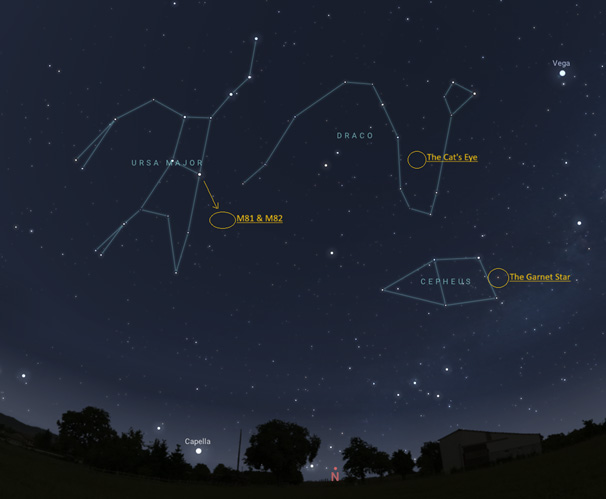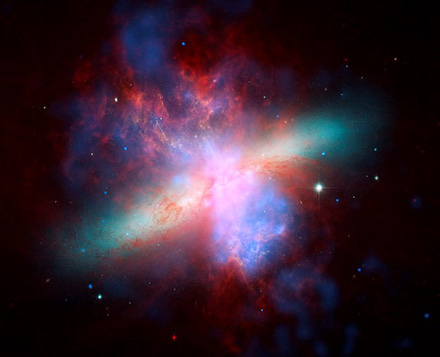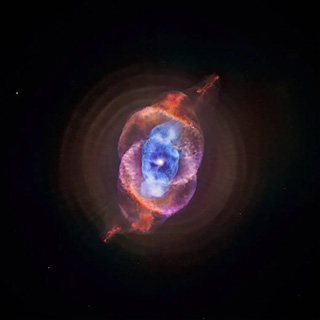 |
From left to right: Ursa Major, Draco, and Cepheus.
Credit: Stellarium Web. |
In our final installment of the stars around the North Star, we look ahead to the summer months, where in the northern hemisphere the circumpolar constellations are nice and high. Today, we’ll discuss objects in Cepheus, Draco, and Ursa Major. A medium to large-sized telescope can spot these under dark skies.
• Herschel’s Garnet Star: Mu Cephei is a deep-red hypergiant known as The Garnet Star, or Erakis. While the star is not part of the constellation pattern, it sits within the constellation boundary of Cepheus, and is more than 1,000 times the size of our Sun. This star is variable. Its brightness can vary anywhere between 3.4 to 5.1 in visible magnitude, over the course of 2-12 years.
• The Cat’s Eye Nebula: Though called a planetary nebula, no planets appear at the center of this object. Observations taken with NASA’s Chandra X-ray Observatory and Hubble Space Telescopes give astronomers a better understanding of this potential binary star and how its core ejected enough mass to produce its rings of dust. When searching for this object, look towards the ‘belly’ of Draco with a medium-sized telescope.
• Bode’s Galaxy and the Cigar Galaxy: Using the arrow on the star map, look diagonal from the star Dubhe in Ursa Major. There you will find Bode’s Galaxy (Messier 81) and the Cigar Galaxy (Messier 82). Use a telescope to spot both. Bode’s Galaxy is a classic spiral shape, similar to our own Milky Way. The Cigar Galaxy, however, is known as a starburst, which often have a high star formation rate and incredible shapes.
 |
| This Cigar Galaxy image composite image from 2006 combines the power of three great observatories: the Hubble Space Telescope, Chandra X-Ray Observatory, and Spitzer Space Telescope. Credit: NASA, ESA, CXC, and JPL-Caltech |
 |
| This composite of data from NASA’s Chandra X-ray Observatory and Hubble Space Telescope gives astronomers a new look for NGC 6543, better known as the Cat’s Eye nebula, which represents a phase of stellar evolution that our sun may experience billions of years from now. Credit: X-ray: NASA/CXC/SAO; Optical: NASA/STScI. |